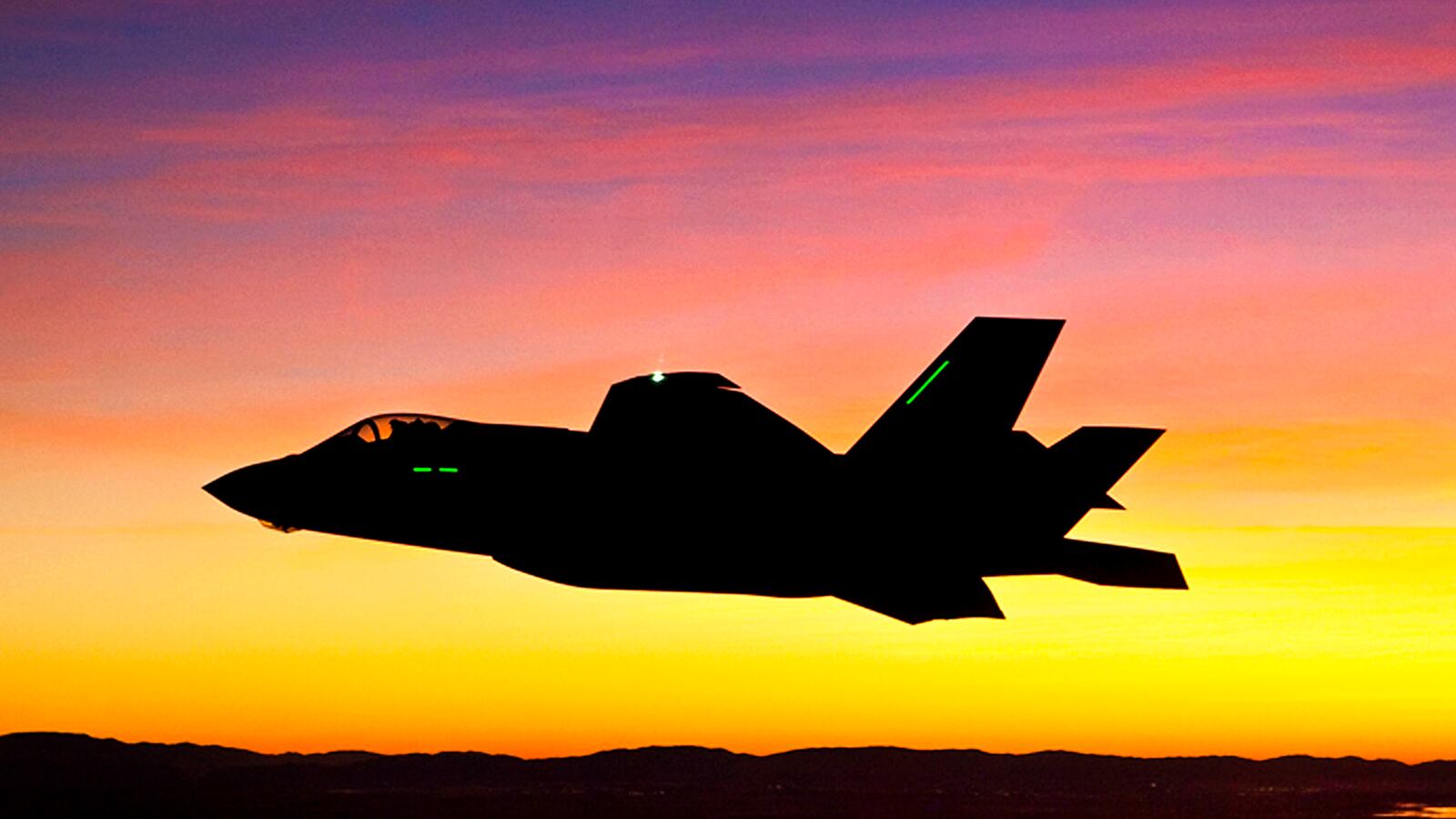The F-35 Joint Strike Fighter—the cornerstone of America’s future tactical air fleet—will survive its failure to show up at two major international air shows, at Fairford and Farnborough in Britain, this month. It was a good thing in that it showed that the U.S. and British military airworthiness experts had the authority and common sense to put safety first.
The no-show does point to issues with the program. Despite some rhetoric, there is no such thing as an “isolated” failure on the scale of the engine fan-stage breakup that caused the Pentagon to ground the stealth fighter in late June. The purpose of mishap investigations is to learn lessons that will reduce the incidence of similar events in the future; at the very least, the component that failed was designed at the same time as the other engine parts that have failed, by the same team and using the same tools.
The failure was part of a record that program officer director Lt. Gen. Chris Bogdan complained about a few months back. “Parts that we didn’t think were going to break, are breaking quicker than we thought,” Bogdan said, characterizing the problem as a “monumental fix—we are not going to see results quickly.” He added that JSF reliability was “woefully below the curve” compared with where it should be at this stage and that already scary operations and support costs would “skyrocket” if reliability problems could not be fixed.
The history of such problems includes four engine-related groundings—two this June, and two in January and February last year. After a limited flight release on July 15 ended the latest episode, a Senate panel recommended that the Pentagon revisit the decision, made after years of painful politicking, to scrap General Electric’s F136 engine, which had been developed as an alternate for the F-35.
Ubiquitous consultant Loren Thompson, who lists Pratt & Whitney—makers of the current JSF engine—among his clients, took to the pages of Forbes to trash such a notion, explaining that the problems “have been typical of what is found during the risk-reduction phase of engine development” (a surprise to anyone who thought that the Pentagon spent billions on risk-reduction in 1996-2000) and repeating the tale that the P&W engine had been “competitively selected” for the F-35.
But Pratt & Whitney and its supporters should focus on fixing the engine rather than re-igniting the Second Great Engine War, because it draws attention to things that the company and its backers said at the time that, today, seem ill-advised.
To quote a P&W-branded blog in 2010: “Supporters of the duplicative alternate engine argue that a second engine is necessary to mitigate the threat of a fleet-wide grounding. This is nothing but a scare tactic… Improved inspection capabilities, as well as the increasing use of prognostic health and condition-monitoring systems, detect problems early and thus mitigate their potential impact on flight operations.”
The prognostics did not predict that, four years and billions of dollars after those confident statements, it would prove unsafe to launch a formation of F-35Bs across the Atlantic.
Bogdan was questioned earlier this year at an Aviation Week conference by a retired Navy aviator, who recalled that prognostics were important to selling the Navy on a single-engine combat aircraft, its first since the A-7 Corsair II in 1965. Bogdan admitted that the necessary sensors and software were not ready.
The killers of the F136 argued that savings from competition would be outweighed by the cost of development, and diluted by lower production volumes for the two engines. This is relevant today, as Lockheed Martin argues that the bulk of cost reduction to come (from $145 million flyaway in Fiscal 2014 to $97 million in 2019) will be attributable to higher production rates.
With the F136 gone, P&W can count on a doubled production rate. But a review of Pentagon “Selected Acquisition Reports” since the F136 was eliminated shows a 5 to 15 percent increase in price for full-rate production, in base-year dollars. None of the SARs reports any projected savings attributable to a higher rate.
There is no sign of any benefit from awarding P&W a monopoly; in fact, Bogdan has grumbled about the difficulty of negotiating with the company and it has been reluctant to divulge its costs.
This still may not make a case for reviving the F136. General Electric’s engineers are not magicians, and producing a better solution to a difficult requirement—including features demanded by the 20-megawatt shaft output of the F-35B—would be challenging. But engine technology has not been static in the past decade. If one believes in a long service life for the JSF, a mid-life-update engine in the 2020s, based on the latest commercial cores, could offer cost and performance advances over the current engine for America’s oft-troubled steath jet.
This column also appears in the latest issue of Aviation Week & Space Technology. For more of Sweetman’s columns, see: aviationweek.com/columns/commanders-intent






